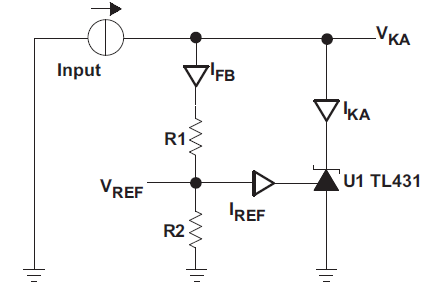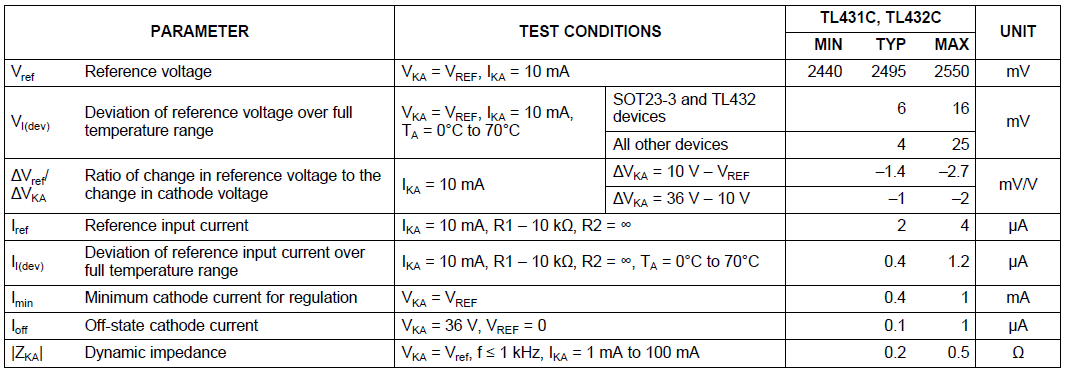SSZTBU6 December 2015 ATL431 , TL431
Have you ever had to pick between two of your favorite desserts and thought to yourself, “Why can’t I have both?” Well, the same thing happens to engineers every day when designing with programmable voltage references (VREF).
A very common goal for engineers is to come up with very-low-power designs that offer a set functionality: to sense temperature, power up a computer, or even serve you your preferred choice of sweets. But did you know that in order to get to that low-power operation, the engineer is also giving up other advantages? In order to achieve low power, engineers often have to design with VREFs that offer very low current but suffer from a loss of accuracy across the operating temperature range. Is there a way for these engineers to have their cake and eat it too? I think you know the answer.
First, let’s take a look at what I mean by VREF accuracy and the conditions that directly impact accuracy. For this example, I will use the commonly used TL431 to drive my analysis. If you have a circuit similar to Power-supply Current Limiter, you can set up R1 and R2 to get the desired VKA output based on the VREF. You can find more information about how to do so in this application note.
 Figure 1 Power-supply Current
Limiter
Figure 1 Power-supply Current
LimiterVREF is not always at its nominal; in fact, it is guaranteed to have an offset based on the device’s operating conditions. TL431 Electrical Specifications shows the specifications table that directly affects VREF.
 Figure 2 TL431 Electrical
Specifications
Figure 2 TL431 Electrical
SpecificationsYou can use Equation Figure 1 to calculate the effective VREF by adding the collective effects of these parameters (typ), assuming operation of VKA = 5V and a cathode current of 2mA.
 Figure 3 (1)
Figure 3 (1)This tells you that for the TL431, the effective VREF is now 2.4899V, or 0.2% accurate, which is not a significant difference in plain sight. But once you cross to the maximum value, which usually happens over high temperatures, you get an effective VREF of 2.539V, or 1.78% accuracy.
How does this affect your system?
In an analog environment, where the overall voltage drift may be the necessary threshold to trigger an operational amplifier, a 44.5mV maximum/6mV minimum offset could mean the difference between regulation and standby, which could lead to system failures. But this becomes more of an issue when you take into consideration the use of the TL431 as a reference for an analog-to-digital converter (ADC). The least significant bit (LSB) voltage is determined based on the converter’s accuracy in number of bits. Assuming the same conditions of 5V and an ADC of 8 bits, you get an LSB of 19.53mV, which should be fine during typical operation as you can see in equation Figure 1. But across temperature the operation will change and the system might be reading wrong data or performing incorrectly.
 Figure 4 (2)
Figure 4 (2)So how can you resolve the accuracy issues and still maintain low-power operation? One solution is the ATL431, which features lower power operation, but significantly improves accuracy. Using the ATL431 under the same conditions and design parameters as before, you’ll get an effective VREF of 2.499V (0.95mV), or 0.03% accuracy. This gives you a much larger margin of error when considering analog operation, but more so, you can now use a much higher resolution ADC (Equation Figure 1):
 Figure 5 (3)
Figure 5 (3)In the end, a small change in the right direction can yield results that are more of a compromise with our original design around TL431. The ATL431 is one of those solutions that provide good-enough power savings to also have an improvement in accuracy, without having to sacrifice one for the other. In the end, even with compromise, it is possible to obtain the best of both worlds.
Additional Resources
- Learn more about the ATL431.
- Learn how to accurately set up your voltage reference.
- Read more in the “Designing with the ‘Advanced’ TL431, ATL431” application note.
- Start your design in WEBENCH® Power Designer.